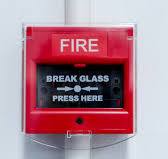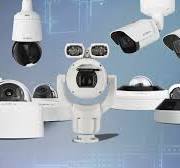Automatic Fire Alarm Systems: Enhancing Safety and Security
Automatic fire alarm systems play a crucial role in safeguarding lives and property by providing early detection of fires. These systems are designed to detect smoke, heat, or flames and alert occupants of a building, allowing them to evacuate safely and quickly in the event of a fire.
One of the key benefits of automatic fire alarm systems is their ability to provide round-the-clock monitoring and immediate notification to authorities or designated personnel when a fire is detected. This rapid response can help prevent the spread of fire and minimize damage to the property.
There are various types of automatic fire alarm systems available, including smoke detectors, heat detectors, flame detectors, and multi-sensor detectors. Each type is designed to detect specific indicators of a fire and trigger an alarm accordingly.
Modern automatic fire alarm systems are equipped with advanced features such as remote monitoring capabilities, integration with sprinkler systems, and notification alerts via mobile devices. These features enhance the overall effectiveness of the system and ensure timely response in case of an emergency.
It is important for buildings, whether residential or commercial, to have automatic fire alarm systems installed in compliance with local safety regulations. Regular maintenance and testing of these systems are also essential to ensure their proper functioning when needed.
In conclusion, automatic fire alarm systems are indispensable tools for enhancing safety and security in buildings. By providing early detection and prompt notification of fires, these systems help save lives and protect property from devastating losses due to fire incidents.
7 Key Benefits of Automatic Fire Alarms: Ensuring Safety and Minimizing Damage
- Early detection of fires
- Rapid notification to occupants and authorities
- Minimizes property damage
- Enhances safety for building occupants
- Round-the-clock monitoring capabilities
- Integration with sprinkler systems for quick response
- Remote monitoring and mobile alerts for added convenience
Potential Drawbacks of Automatic Fire Alarm Systems: Key Considerations
- False alarms can occur due to cooking smoke or dust triggering the sensors.
- Initial installation and setup costs can be relatively high for comprehensive systems.
- Maintenance and periodic testing are required to ensure proper functionality, adding to ongoing costs.
- In rare cases, technical malfunctions or system failures may lead to delayed or no alarm activation during a fire.
- Dependency on external power sources means the system may be rendered ineffective during power outages unless backed up by a reliable generator or battery system.
- In buildings with high ceilings or open spaces, there may be challenges in ensuring adequate coverage and detection by the alarm system.
Early detection of fires
Early detection of fires is a crucial advantage of automatic fire alarm systems. By promptly sensing the presence of smoke, heat, or flames, these systems can swiftly alert occupants and authorities, allowing for immediate action to be taken to mitigate the spread of fire and ensure the safety of individuals within a building. This early warning enables quick evacuation procedures to be implemented, reducing the risk of injuries and potentially saving lives. Additionally, early detection can help minimize property damage by facilitating a rapid response from firefighting personnel. Automatic fire alarms provide peace of mind by offering a proactive approach to fire safety through their ability to detect and signal potential hazards at the earliest possible moment.
Rapid notification to occupants and authorities
Automatic fire alarm systems offer the crucial benefit of providing rapid notification to both occupants and authorities in the event of a fire emergency. By promptly alerting occupants within a building, these systems ensure that individuals can evacuate safely and swiftly, minimizing the risk of injuries or fatalities. Simultaneously, notifying authorities allows for swift response and intervention, enabling firefighters to reach the scene quickly and take necessary actions to contain the fire. This rapid notification feature significantly enhances overall safety and security measures, demonstrating the vital role that automatic fire alarm systems play in protecting lives and property.
Minimizes property damage
Automatic fire alarm systems play a crucial role in minimizing property damage by providing early detection of fires. By promptly alerting occupants and authorities to the presence of a fire, these systems enable swift response measures to be taken, such as initiating sprinkler systems or evacuation procedures. This rapid intervention helps contain the fire and prevent it from spreading, thereby reducing the extent of damage to the property. Ultimately, the ability of automatic fire alarm systems to swiftly detect fires and facilitate timely action significantly contributes to minimizing property damage and preserving valuable assets.
Enhances safety for building occupants
Automatic fire alarm systems significantly enhance safety for building occupants by providing early detection of fires. This proactive approach ensures that occupants are alerted promptly, allowing them to evacuate the building swiftly and safely in the event of a fire. By detecting smoke, heat, or flames at the earliest stages, automatic fire alarm systems help prevent potential injuries or fatalities, as well as minimize property damage. This crucial safety feature offers peace of mind to occupants, knowing that they are protected by a system that prioritizes their well-being in emergency situations.
Round-the-clock monitoring capabilities
Round-the-clock monitoring capabilities are a key advantage of automatic fire alarm systems. With this feature, the system is constantly vigilant, ready to detect any signs of fire at any time of the day or night. This ensures that potential fire hazards are identified promptly, even when the building is unoccupied. The ability to monitor the premises 24/7 enhances the overall safety and security of the building, providing peace of mind to occupants and property owners alike. In the event of a fire outbreak, immediate alerts can be sent to authorities or designated personnel, enabling swift response and potentially preventing a small incident from escalating into a major disaster.
Integration with sprinkler systems for quick response
Integration of automatic fire alarm systems with sprinkler systems is a significant advantage that enhances the overall fire safety measures in a building. When a fire alarm is triggered, the integrated system can immediately activate the sprinklers to suppress the fire, helping to contain it and prevent its spread. This quick response not only helps in minimizing property damage but also increases the chances of successfully extinguishing the fire before it escalates into a larger and more dangerous situation. The seamless coordination between automatic fire alarms and sprinkler systems ensures a swift and effective response to fires, ultimately contributing to enhanced safety for occupants and protection of the building.
Remote monitoring and mobile alerts for added convenience
Remote monitoring and mobile alerts are significant advantages of automatic fire alarm systems, providing added convenience and peace of mind to users. With remote monitoring capabilities, users can keep track of their property’s safety status from anywhere at any time, allowing for proactive response to any potential fire incidents. Mobile alerts ensure that users are promptly notified on their smartphones or other mobile devices in case of a fire emergency, enabling quick decision-making and swift action to mitigate the situation. This feature enhances the overall effectiveness of automatic fire alarm systems by offering real-time updates and ensuring that occupants can respond promptly to ensure their safety and the safety of others.
False alarms can occur due to cooking smoke or dust triggering the sensors.
False alarms are a common con associated with automatic fire alarm systems, as they can be triggered by non-threatening factors such as cooking smoke or dust. These false alarms can lead to unnecessary panic among occupants and may result in a lack of trust in the system’s reliability. Additionally, repeated false alarms can strain emergency response resources and cause disruptions to normal activities within the building. Proper maintenance, regular sensor cleaning, and ensuring proper placement of detectors can help reduce the occurrence of false alarms and enhance the overall effectiveness of automatic fire alarm systems.
Initial installation and setup costs can be relatively high for comprehensive systems.
One of the drawbacks of automatic fire alarm systems is that the initial installation and setup costs can be relatively high, especially for comprehensive systems. The investment required for purchasing and installing the necessary equipment, wiring, sensors, control panels, and other components can pose a financial challenge for some property owners. However, it is important to consider these costs as a crucial investment in ensuring the safety and security of occupants and assets within the building. Despite the initial expenses, the long-term benefits of having a reliable automatic fire alarm system far outweigh the upfront costs in terms of peace of mind and protection against potential fire hazards.
Maintenance and periodic testing are required to ensure proper functionality, adding to ongoing costs.
Maintenance and periodic testing of automatic fire alarm systems are essential to ensure their proper functionality and reliability. However, this requirement can be seen as a con as it adds to the ongoing costs associated with these systems. Regular maintenance by qualified professionals and scheduled testing may incur additional expenses for building owners or facility managers. Despite the financial aspect, investing in regular maintenance and testing is crucial to guarantee that the automatic fire alarm system operates effectively in case of an emergency, ultimately prioritizing the safety of occupants and protecting valuable assets within the premises.
In rare cases, technical malfunctions or system failures may lead to delayed or no alarm activation during a fire.
In rare cases, one significant drawback of automatic fire alarm systems is the possibility of technical malfunctions or system failures that can result in delayed or no alarm activation during a fire. These instances can compromise the effectiveness of the system and potentially put occupants at risk by not providing timely warning in emergency situations. It is crucial for building owners and facility managers to conduct regular maintenance checks and ensure proper functioning of automatic fire alarm systems to mitigate the risk of such failures and maximize the safety measures in place.
Dependency on external power sources means the system may be rendered ineffective during power outages unless backed up by a reliable generator or battery system.
The dependency on external power sources is a significant drawback of automatic fire alarm systems as it poses a risk of rendering the system ineffective during power outages. Without a reliable backup power source such as a generator or battery system, the automatic fire alarm may fail to function when needed most, potentially compromising the safety and security of occupants in the event of a fire. It is crucial for building owners and managers to invest in robust backup power solutions to ensure continuous operation of the fire alarm system even during electrical disruptions.
In buildings with high ceilings or open spaces, there may be challenges in ensuring adequate coverage and detection by the alarm system.
In buildings with high ceilings or open spaces, a significant challenge of automatic fire alarm systems arises in ensuring adequate coverage and detection. The elevated height and expansive area can create blind spots where smoke or heat may not reach the detectors effectively, potentially leading to delayed or incomplete detection of a fire. This limitation underscores the importance of strategic placement of detectors and supplementary measures to address the unique challenges posed by such architectural features, ensuring comprehensive coverage and timely response in the event of a fire.



